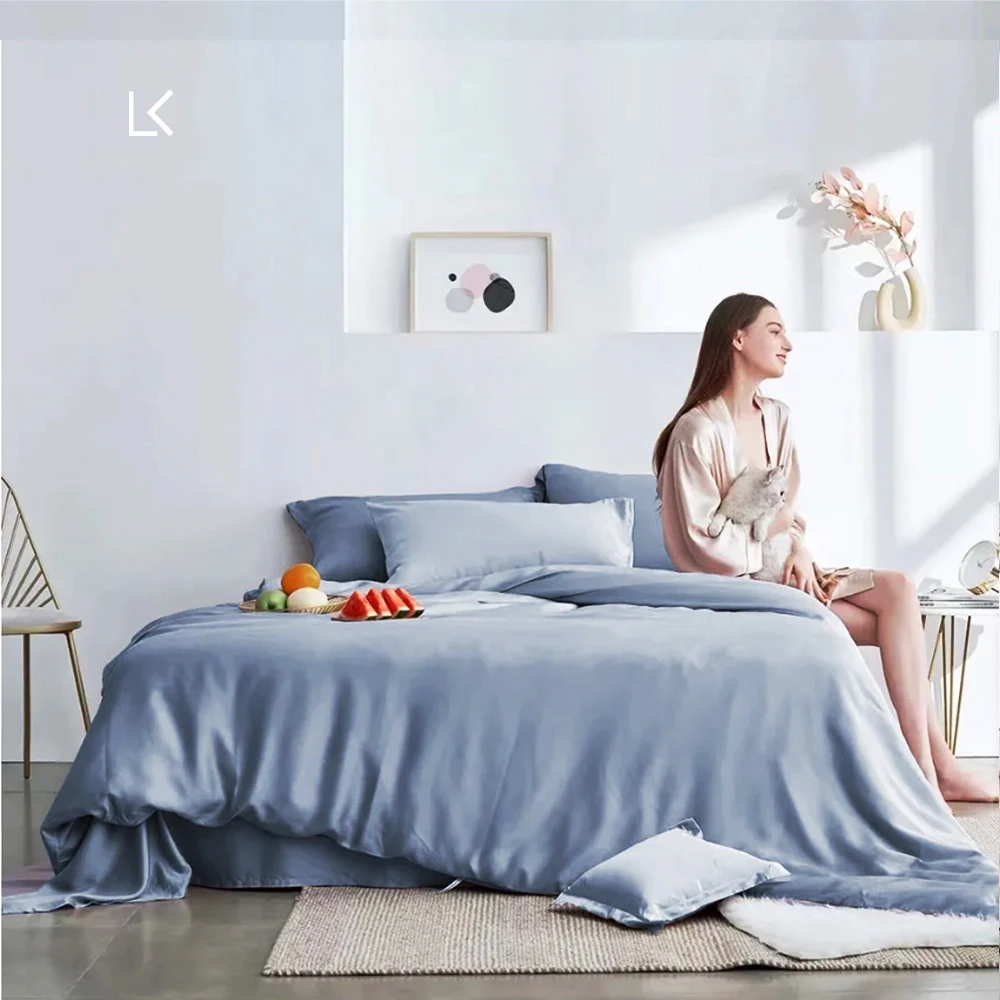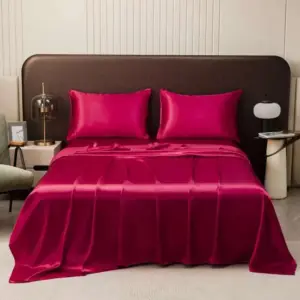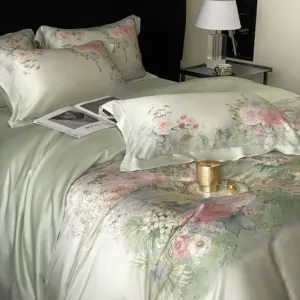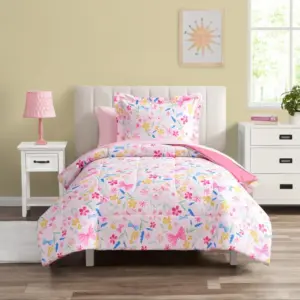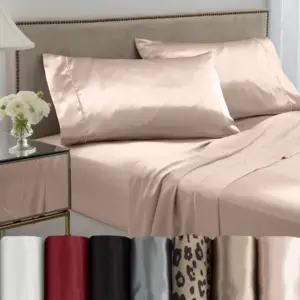Introduction: Understanding Silk and Its Vegan Alternatives
The world of fabrics offers us countless options, but few materials have captured our imagination quite like silk. Traditional silk, derived from the cocoons of silkworms, has been treasured for millennia for its unmistakable sheen and luxurious feel. In contrast, vegan silk refers to plant-based or synthetic alternatives designed to mimic silk’s coveted properties without using animal products.
As consumers become increasingly conscious about their purchasing decisions, the interest in ethical and sustainable textile choices has grown dramatically. Many people are searching for alternatives that align with their values while still delivering the luxury experience they desire. This shift has led to remarkable innovations in textile development, particularly in creating fabrics that capture silk’s best qualities without the ethical concerns.
When discussing these materials, terminology matters. Terms like “silk-like,” “silk alternative,” and “vegan silk” are often used interchangeably, but they represent a broad spectrum of materials with varying properties and production methods. Understanding the fundamental differences between traditional and vegan silk helps consumers make choices that align with both their values and practical needs.
At Sanctuary Soft, we recognize that consumers have different priorities, which is why we offer both premium traditional silk products and high-quality vegan silk alternatives to meet diverse preferences and values. In this comprehensive comparison, we’ll explore every aspect of these materials—from their origins and production to their performance, sustainability, and practical applications—empowering you to make an informed choice.
What Is Traditional Silk? Origin and Production
Traditional silk is a natural protein fiber that has been prized for thousands of years. Its story begins with a tiny creature – the silkworm, specifically the Bombyx mori moth’s larva. Unlike most textiles which come from plant fibers or synthetic sources, silk is an animal-derived protein fiber with a complex molecular structure.
The Ancient Origins of Silk
Silk production dates back over 5,000 years, originating in ancient China where it was so valuable that it became currency and sparked the development of trade routes like the famous Silk Road. The process of creating silk, known as sericulture, was once a carefully guarded secret that eventually spread throughout Asia and eventually to the Western world.
The Sericulture Process
The journey from silkworm to fabric involves several precise steps:
- Silkworm eggs are hatched in controlled environments
- The larvae feed exclusively on mulberry leaves for 4-6 weeks
- When mature, they spin cocoons made of a single continuous filament
- Traditional production involves boiling the cocoons with the silkworms inside
- The filaments are then unwound and several strands are twisted together to create thread
- These threads are then woven into fabric
This process yields a remarkable material that is simultaneously strong and delicate. Silk’s protein structure (comprised primarily of fibroin and sericin) creates natural properties that have been coveted for millennia.
Types and Quality of Silk
Not all silk is created equal. The quality of silk is measured in momme weight, which indicates the density of the fabric. Premium silk typically falls within the 19-25 momme range, striking the ideal balance between luxurious feel and durability.
Several varieties of silk exist, with Mulberry silk being considered the finest. Other varieties include:
- Tussah silk (wild silk)
- Eri silk
- Muga silk
- Spider silk (extremely rare)
Each has slightly different properties, but all share silk’s characteristic strength, sheen, and softness. Consumers seeking premium mulberry silk bedding sets often look for products in the higher momme weight range for maximum luxury and longevity.
The natural composition of silk makes it distinct from all natural silk vs. alternative fabrics in ways that affect everything from its feel to its performance to its environmental impact—all factors we’ll explore in deeper detail throughout this comparison.
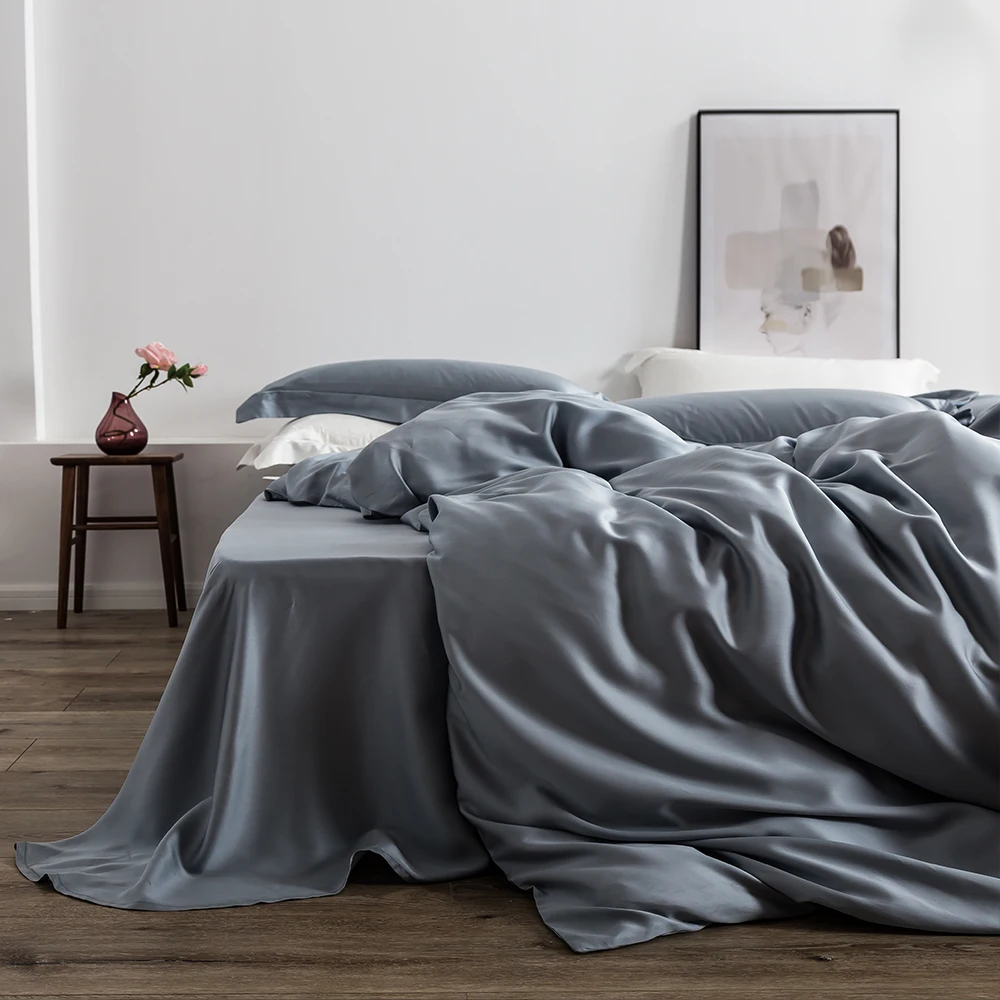
What Is Vegan Silk? Definition and Development
Vegan silk encompasses a diverse range of plant-based or synthetic materials designed to replicate silk’s desirable characteristics without using animal products. These alternatives aim to capture silk’s luxurious drape, softness, and sheen while addressing ethical concerns associated with traditional silk production.
Defining Vegan Silk
It’s important to understand that “vegan silk” is not true silk—it contains no silk proteins. Rather, it’s an umbrella term for materials engineered to provide a similar sensory experience and functional benefits as animal-derived silk. These alternatives have been developed specifically to address the ethical concerns surrounding traditional sericulture, which typically involves killing silkworms in their cocoons.
The development of these alternatives has accelerated dramatically in recent decades, driven by growing consumer demand for cruelty-free options and technological innovations in fiber processing. Today’s vegan silk alternatives are significantly more sophisticated than early attempts, with some coming remarkably close to replicating silk’s most coveted properties.
The Evolution of Silk Alternatives
The quest for silk-like fabrics isn’t new—humans have long sought to recreate silk’s qualities in more accessible materials. However, recent advancements in textile technology have revolutionized what’s possible in vegan silk sustainable production processes.
Modern cellulosic fibers can now be processed to achieve previously impossible levels of softness and drape. Closed-loop manufacturing systems have improved the environmental profile of many alternatives. And innovative sources—from orange peels to lotus stems—continue to expand the range of options available.
Common Terminology Confusion
One persistent challenge in discussing these materials is terminology confusion. Terms like “silk,” “satin,” and “silky” are often used interchangeably in marketing, but they refer to different things:
- Silk is specifically the protein fiber produced by silkworms
- Satin refers to a weave pattern, not a fiber type (and can be made from silk or many other fibers)
- “Silky” is a subjective description of touch and appearance
This confusion can make it difficult for consumers to understand exactly what they’re purchasing. When a product is described as “vegan silk,” it’s important to identify the specific material being used, as the properties can vary significantly between different alternatives.
Types of Vegan Silk Alternatives: Materials Overview
The world of vegan silk alternatives is diverse, with options ranging from plant-based cellulosic fibers to semi-synthetics and fully synthetic materials. Each offers different benefits and drawbacks in terms of feel, performance, and environmental impact.
Plant-Based Cellulosic Fibers
Tencel™/Lyocell (Eucalyptus)
Derived from eucalyptus wood pulp, Tencel is produced using a closed-loop system that recycles water and solvents. It offers exceptional softness, good moisture management, and environmental benefits. Tencel has a smooth, cool feel that resembles silk’s drape with excellent breathability. Many consumers seeking eucalyptus-based vegan silk sheet options appreciate its cooling properties and sustainable production methods.
Bamboo
Bamboo can be processed in two primary ways:
– Bamboo Lyocell: Uses a closed-loop system similar to Tencel, resulting in a more environmentally friendly fabric
– Bamboo Viscose: Uses a more chemical-intensive process but produces an exceptionally soft fabric
Bamboo fabrics offer excellent softness, moisture-wicking properties, and natural antibacterial characteristics. Bamboo-based vegan silk alternatives have gained popularity for their silky feel and thermal-regulating properties.
Modal
Made from beech wood pulp, Modal offers exceptional softness and resistance to shrinkage. It has excellent drape and maintains its shape well, making it popular for both apparel and bedding. Modal typically feels slightly heavier than silk but offers comparable softness and sheen.
Semi-Synthetic Options
Cupro
Derived from cotton linter (the short fibers around cotton seeds), Cupro undergoes chemical processing to create a silky fabric with excellent drape. It resembles silk in appearance and feel, with a cooling sensation against the skin. While technically plant-derived, its processing involves chemicals that require careful management.
Plant-Based Innovations
Newer innovations are continuously emerging, including:
- Piñatex: Made from pineapple leaf fibers, though currently more leather-like than silk-like
- Orange Fiber: Created from citrus juice byproducts
- Lotus Fiber: Extracted from lotus stems, traditionally harvested by hand
- Soy Silk: Produced from soy protein
These materials represent exciting innovations but are generally less widely available for consumer products compared to more established alternatives.
Synthetic Options
Polyester Satin
While not plant-based, polyester satin remains one of the most accessible and affordable silk alternatives. It’s created using a satin weave (which creates the smooth surface) with polyester fibers. While it lacks the breathability and temperature regulation of natural fibers, modern high-quality polyester satin can closely mimic silk’s appearance and smoothness.
Understanding these diverse options helps consumers make informed choices about which silk bedding alternatives might best meet their specific needs and values.
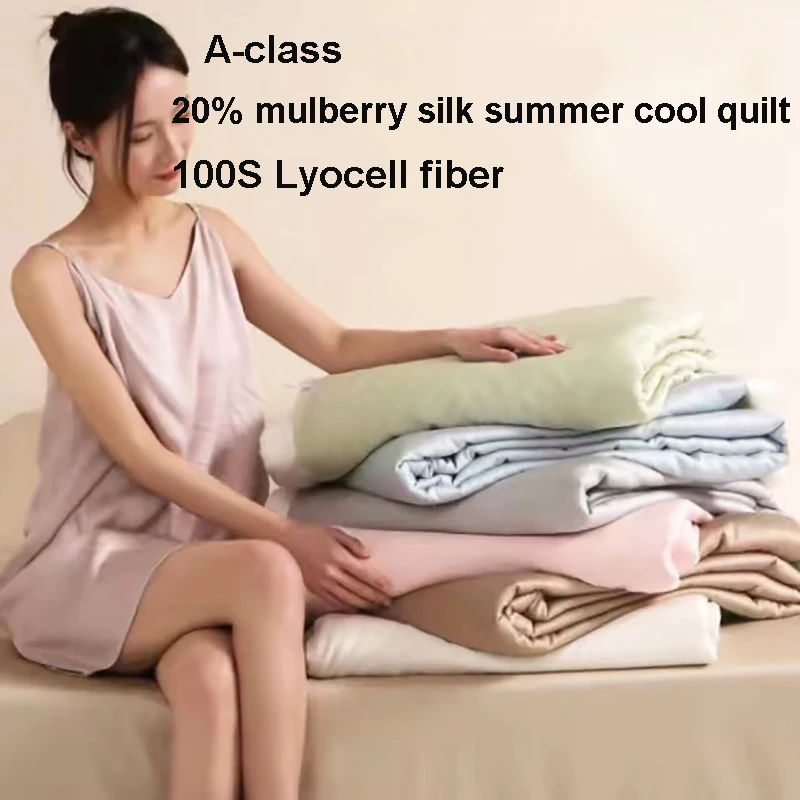
Material Composition and Structure: How They Differ
The fundamental difference between traditional silk and vegan alternatives lies in their molecular structure, which influences virtually all of their properties. Understanding these structural differences helps explain why they perform differently in various situations.
Protein vs. Cellulose: The Basic Distinction
Traditional silk is composed of proteins—specifically fibroin and sericin—arranged in a highly organized structure. These protein chains create a crystalline arrangement that gives silk its unique combination of strength, elasticity, and light refraction properties.
In contrast, most vegan alternatives (except for synthetic polyester) are based on cellulose, the primary component of plant cell walls. Cellulose has a different molecular arrangement, typically forming long chains that can be processed to create smooth fibers but with fundamentally different properties than protein-based fibers.
This structural comparison between vegan and natural silk explains many of their performance differences:
- Silk proteins contain amino acids that interact with human skin and hair
- Cellulose-based fibers lack these amino acids but can offer excellent moisture management
- Protein fibers have natural elasticity that must be engineered into cellulose fibers
- The crystalline structure of silk creates its natural sheen, while cellulose fibers must be processed to achieve similar light reflection
Fiber Characteristics Under the Microscope
At a microscopic level, silk fibers have a triangular cross-section that refracts light in multiple directions, creating its characteristic sheen. The fibers are incredibly fine—about 1/5 the diameter of human hair—contributing to silk’s lightweight feel.
Vegan alternatives vary in their microscopic structure:
– Lyocell/Tencel has round, smooth fibers that create a clean surface
– Bamboo fibers have a more irregular cross-section that helps with moisture absorption
– Polyester fibers can be engineered into various shapes but typically lack the microscopic variations that give natural fibers their unique properties
The Influence of Weave Patterns
While fiber composition is fundamental, weave pattern significantly influences how a fabric performs and feels. Satin weaves—characterized by floating threads that create a smooth surface—can enhance the silk-like qualities of any fiber by increasing sheen and smoothness.
However, even with identical weave patterns, the underlying fiber characteristics will still create noticeable differences in drape, breathability, and interaction with skin. This is why high-quality processing is essential for vegan alternatives to achieve results that come close to traditional silk.
Luxurious Feel: Texture and Drape Comparison
The tactile experience of fabric against skin is perhaps the most immediate and emotional aspect of textile selection. Traditional silk has long been the benchmark for luxury, but how do vegan alternatives compare in the sensory experience they provide?
The Unique Feel of Silk
Traditional silk offers a distinctive combination of sensory qualities that come from its protein structure and fine fibers:
- Exceptionally smooth surface that feels cool to initial touch
- Natural weight that creates elegant drape and movement
- Subtle friction against skin that prevents slipping
- A unique balance of softness without excessive give or stretch
These properties have made luxury silk bedding sets highly sought after for centuries, with many considering the feel of silk against skin to be unmatched.
How Vegan Alternatives Compare
Each vegan alternative offers a different tactile experience that approximates aspects of silk’s feel:
| Material | Softness | Smoothness | Drape | Weight | Closest to Silk |
|---|---|---|---|---|---|
| Tencel/Lyocell | Very high | Very high | Excellent | Lightweight | Very close |
| Bamboo Lyocell | Very high | High | Good | Light-medium | Close |
| Modal | Very high | High | Excellent | Medium | Close |
| Cupro | High | Very high | Excellent | Light | Very close |
| Polyester Satin | Medium-high | Very high | Moderate | Varies | Appearance only |
Tencel/Lyocell and Cupro typically come closest to replicating silk’s overall feel, with exceptional drape and smoothness. Premium bamboo alternatives offer outstanding softness but with a slightly different hand feel than traditional silk.
The most noticeable differences are often subtle:
– Most vegan alternatives feel slightly cooler against skin initially
– Traditional silk has a distinctive “dry hand” that’s challenging to replicate
– Vegan alternatives often lack the subtle friction that gives silk its non-slippery quality
– The weight and movement of fabrics differ slightly, especially noticeable in flowing garments
High-quality processing makes a significant difference in how close vegan alternatives can come to replicating the silk experience. Premium alternatives have narrowed the gap considerably, with some consumers actually preferring certain vegan options for their specific feel characteristics.
Visual Appeal: Luster and Appearance Analysis
The visual qualities of silk—its characteristic sheen, how it catches the light, and its rich color saturation—are among its most coveted attributes. These visual properties are directly tied to silk’s molecular structure, creating unique challenges for vegan alternatives attempting to replicate this visual magic.
The Natural Luminescence of Silk
Traditional silk has a natural luster that’s often described as pearlescent rather than shiny. This subtle radiance comes from the triangular prism-like structure of silk fibers, which refract light in multiple directions. The result is a glow that seems to come from within the fabric rather than merely reflecting off its surface.
Silk also excels at color absorption, creating rich, deep hues with complex undertones. This exceptional color saturation combined with its natural sheen creates the distinctive visual character that has made silk synonymous with luxury.
Visual Qualities of Alternatives
Vegan alternatives achieve their sheen through different mechanisms:
- Lyocell/Tencel has naturally smooth fibers that reflect light evenly, creating a more subtle sheen than silk
- Bamboo fabrics typically have a softer luster that’s less pronounced than silk
- Cupro can achieve a very silk-like sheen due to its processing methods
- Polyester satin creates its sheen through the weave pattern rather than the fiber structure, resulting in a more uniform and sometimes “flashier” appearance
Many consumers wondering if vegan silk is as good as real silk are particularly concerned with visual appeal. The answer depends on the specific alternative and what aspects of silk’s appearance are most valued.
Color Performance and Longevity
Another visual consideration is how fabrics maintain their appearance over time:
- Traditional silk may gradually fade with sun exposure, though high-quality silk is quite color-stable
- Tencel and Modal typically offer excellent colorfastness
- Bamboo can be prone to fading with repeated washing
- Polyester generally maintains its color well but may develop a shine with wear
For items like bedding that see regular washing and light exposure, these differences in visual longevity can be an important consideration when choosing between traditional silk and various alternatives.
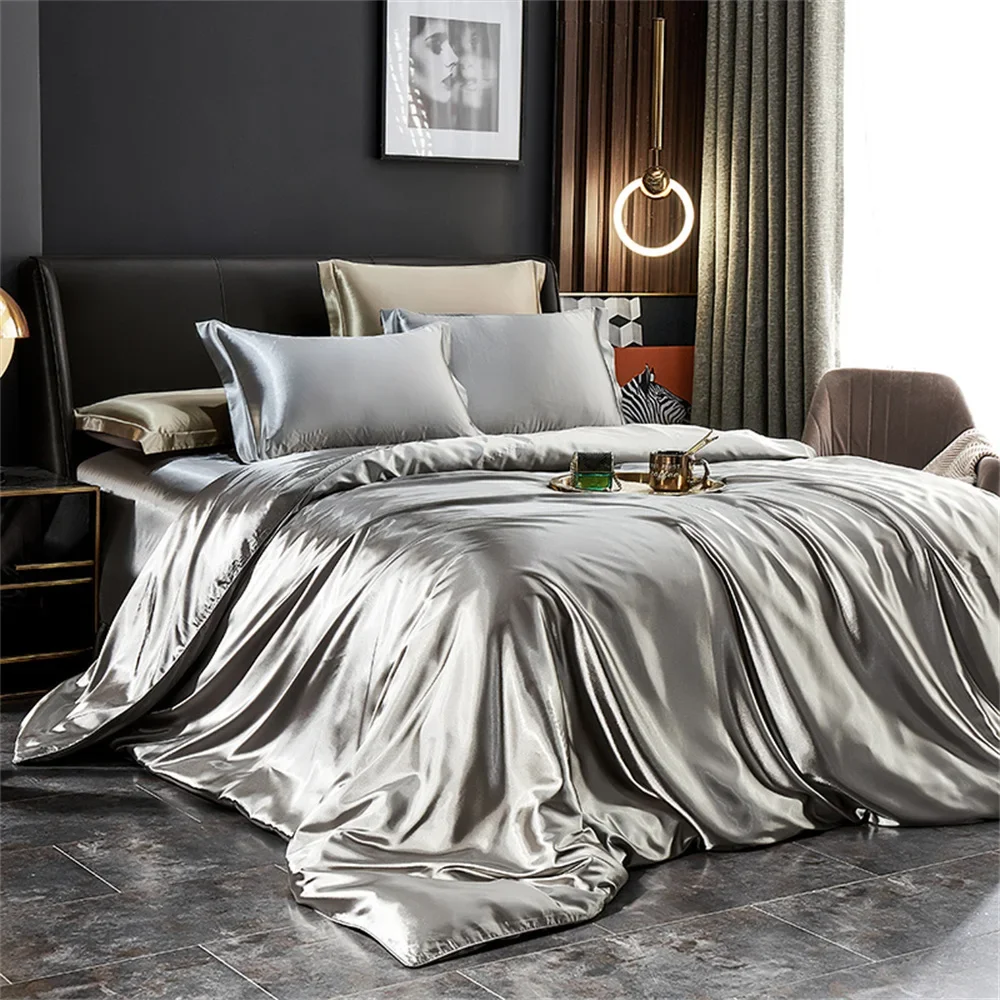
Performance Factors: Breathability and Temperature Regulation
One of silk’s most prized functional benefits is its remarkable ability to regulate temperature and manage moisture—properties that make it exceptionally comfortable in various conditions. These performance characteristics are directly tied to silk’s protein structure and how it interacts with air and moisture.
Silk’s Natural Climate Control
Traditional silk has several temperature-regulating properties:
- It efficiently wicks moisture away from the skin
- The protein structure can absorb up to 30% of its weight in moisture without feeling damp
- It adapts to body temperature, feeling cool in warm weather and warm in cool weather
- The natural fibers allow air circulation while still providing insulation
These properties make cooling silk sheets popular for hot sleepers and those in warm climates, while still providing comfort in cooler conditions.
How Alternatives Manage Temperature and Moisture
Vegan alternatives vary considerably in their temperature regulation capabilities:
Tencel/Lyocell
– Excellent moisture absorption (even better than silk in some cases)
– Very good breathability and air circulation
– Cooling feel against the skin
– Less effective as an insulator in cold conditions
Bamboo
– Very good moisture-wicking properties
– Natural antibacterial properties that help with odor control
– Good temperature regulation in both warm and cool conditions
– May feel slightly less cooling than Tencel initially
Modal
– Good moisture management
– Moderate breathability
– Less cooling than Tencel but more than polyester
– Comfortable across a range of temperatures
Polyester Satin
– Limited breathability
– Poor moisture absorption
– Can trap heat and feel clammy in warm conditions
– May create static electricity
For consumers with specific needs like night sweats or sensitivity to temperature fluctuations, these differences can be significant. The best ethical, sustainable, and luxurious vegan fabrics for temperature regulation tend to be Tencel/Lyocell and premium bamboo lyocell, which come closest to matching silk’s performance.
Performance in Different Environments
The performance gap between traditional silk and vegan alternatives becomes more or less pronounced depending on the environment:
- In hot, humid climates, Tencel may actually outperform silk for some people
- In dry conditions, silk’s moisture absorption may provide better comfort
- For year-round use in variable climates, both premium silk and high-quality bamboo or Tencel offer good versatility
Comfort and Health Benefits: Skin and Hair Interaction
Beyond feel and performance, both traditional silk and certain vegan alternatives offer notable benefits for skin and hair health. These benefits stem from how the materials interact with skin at the microscopic level and their ability to manage moisture.
Silk’s Skin and Hair Advantages
Traditional silk has several health-promoting properties:
- Natural proteins contain amino acids that may benefit skin
- Extremely smooth surface creates minimal friction against skin and hair
- Hypoallergenic properties make it suitable for sensitive skin
- Doesn’t absorb facial moisturizers like cotton does
- Reduces hair breakage and bedhead compared to rougher fabrics
These properties have made silk pillowcases especially popular for those concerned with skin aging and hair health.
Skin Benefits of Vegan Alternatives
Different alternatives offer varying benefits for skin and hair:
Tencel/Lyocell
– Exceptionally smooth surface minimizes friction
– Excellent moisture management helps keep skin hydrated
– Natural antibacterial properties
– Hypoallergenic and suitable for sensitive skin
Bamboo
– Natural antibacterial and antifungal properties
– Hypoallergenic and gentle for sensitive skin
– Good moisture-wicking to prevent skin irritation
– Less friction than cotton but slightly more than silk
Modal
– Very smooth surface with minimal friction
– Good for sensitive skin
– Less absorption of face creams than cotton
– Maintains softness with washing
Polyester Satin
– Smooth surface helps reduce friction
– Non-absorbent (doesn’t draw moisture from skin)
– May cause issues for acne-prone skin due to poor breathability
– May generate static electricity that affects hair
Special Considerations for Specific Needs
For those with specific skin concerns, material choice can be particularly important:
- Eczema sufferers often find both silk and Tencel comfortable
- Those with acne may benefit from silk or bamboo’s antibacterial properties
- People with very dry skin may prefer silk’s moisture-preserving qualities
- Those with allergies should consider both silk and Tencel/Lyocell as excellent hypoallergenic options
It’s worth noting that while both silk and premium vegan alternatives offer skin benefits, they work through different mechanisms—silk through its protein structure and vegan alternatives primarily through their smooth surface and moisture management.
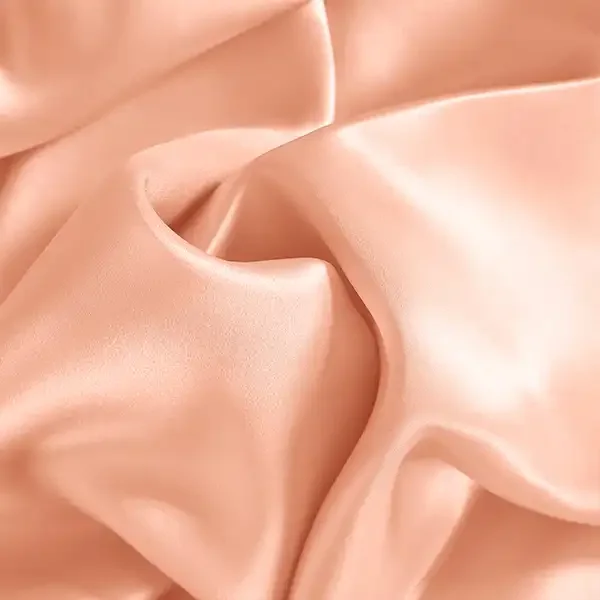
Ethical Considerations: Animal Welfare and Production
The ethical dimension is often a primary motivation for consumers considering vegan silk alternatives. Understanding the ethical implications of both traditional silk and its alternatives provides important context for making values-aligned choices.
Traditional Silk Production and Animal Welfare
Conventional silk production raises specific animal welfare concerns:
- Commercial silk production typically involves boiling silkworm cocoons with the pupae still inside
- Each silk garment may represent thousands of silkworms
- The domesticated silkworms used for commercial production cannot survive in the wild and have been bred to maximize silk production
These concerns lead many ethically-motivated consumers to seek alternatives that align with vegan principles.
Peace Silk: A Middle Ground?
“Peace silk” or “ahimsa silk” represents an attempt to address these ethical concerns while still producing real silk:
- The process allows moths to emerge naturally from their cocoons before harvesting the silk
- The resulting silk is more textured as the emerging moth breaks the continuous filament
- While more humane, peace silk still uses insects in the production process and is thus not considered vegan
- The production is limited and typically more expensive than conventional silk
For consumers making ethical choices between silk and cruelty-free alternatives, it’s important to understand that peace silk represents a compromise position rather than a fully vegan option.
Broader Ethical Considerations
While animal welfare is a central ethical concern, a comprehensive ethical assessment might also consider:
- Human labor conditions in production
- Environmental impacts of different production methods
- Product longevity and lifecycle considerations
- Cultural and economic contexts of production
These broader ethical dimensions remind us that material choices involve complex value judgments that extend beyond a single ethical criterion.
Environmental Impact: Sustainability Comparison
Environmental sustainability represents another crucial dimension when comparing traditional silk with vegan alternatives. Each material has a unique environmental footprint shaped by raw material sourcing, processing methods, use phase impacts, and end-of-life considerations.
Traditional Silk’s Environmental Profile
Silk’s environmental impact has several dimensions:
Advantages:
– Biodegradable natural fiber
– Renewable resource
– Long-lasting when properly cared for
– Low water usage compared to cotton
– Minimal pesticide use as silkworms are sensitive to chemicals
Challenges:
– Energy-intensive production process (heating water to soften cocoons)
– Some chemical processing for degumming and dyeing
– Land use for mulberry tree cultivation
– Limited scale of production creates higher per-unit environmental costs
Vegan Alternatives: A Mixed Environmental Picture
Different vegan alternatives have vastly different environmental profiles:
Tencel/Lyocell (Eucalyptus)
– Closed-loop production system recycles 99% of solvents and water
– Sustainably managed eucalyptus forests require minimal water and no pesticides
– Biodegradable end product
– Excellent sustainability certifications available
– Eucalyptus-based bedding options are among the most environmentally friendly choices
Bamboo
– Extremely fast-growing renewable resource
– Requires minimal water and no pesticides
– Process differences matter greatly:
– Bamboo lyocell (closed-loop) has good environmental credentials
– Bamboo viscose involves more chemical processing with potential environmental impacts
Cupro
– Uses cotton industry waste product (cotton linters)
– Chemical-intensive process with potential environmental concerns
– Some producers are improving with closed-loop systems
Polyester Satin
– Petroleum-derived synthetic
– Non-biodegradable
– Energy-intensive production
– Microplastic shedding concerns
– Long-lasting and washable at lower temperatures
Certifications and Transparency
When evaluating environmental claims, certifications provide important verification:
- OEKO-TEX Standard 100 (tests for harmful substances)
- Global Organic Textile Standard (GOTS)
- TENCEL™ branded lyocell (verified sustainable forestry and closed-loop production)
- Cradle to Cradle certification
These standards help consumers navigate complex sustainability claims and identify truly environmentally responsible options.
Durability and Care: Longevity and Maintenance
A material’s longevity and care requirements significantly impact both its total cost of ownership and environmental footprint. Both traditional silk and vegan alternatives vary considerably in their durability and maintenance needs.
Traditional Silk’s Durability Profile
Contrary to common perception, high-quality silk is surprisingly durable:
- Natural strength (silk is one of the strongest natural fibers)
- Resistance to stretching and deformation
- Potential longevity of many years with proper care
- Vulnerable to prolonged sun exposure and certain chemicals
However, silk does require specific care:
– Hand washing or delicate machine cycle recommended
– Mild, pH-neutral detergents
– Air drying away from direct sunlight
– Medium or cool iron on reverse side if necessary
Many people find that the durability and care aspects of silk and vegan alternatives require different trade-offs.
Vegan Alternatives: Care and Longevity
Different alternatives offer varying durability profiles:
Tencel/Lyocell
– Good tensile strength, especially when wet
– Resistant to wrinkles
– Machine washable on gentle cycle
– Prone to fibrillation (surface fuzz) if not properly finished
– Typically lasts 5+ years with proper care
Bamboo
– Generally less durable than silk or Tencel
– May pill with repeated washing
– Machine washable on gentle cycle
– May shrink if exposed to high heat
– Typically shows wear after 2-3 years of regular use
Modal
– Excellent resistance to shrinkage
– Good color retention
– Machine washable and more resistant to damage from improper care
– Less prone to pilling than bamboo
– Good longevity similar to Tencel
Polyester Satin
– Very durable and resistant to damage
– Easy care (machine washable)
– Resistant to shrinking and stretching
– May develop shine or “seat” over time
– Potential for long lifespan but may look worn before it actually wears out
Care Instructions Comparison
For practical reference, here are the basic care approaches for each material:
Silk:
– Hand wash or delicate machine cycle
– Use specialized silk detergent
– Water temperature below 86°F (30°C)
– No bleach or enzymes
– Air dry, avoid direct sunlight
– Iron on low heat if needed
Tencel/Lyocell:
– Machine wash cold or warm
– Gentle cycle
– Mild detergent
– Tumble dry low or air dry
– Iron on low if needed
Bamboo:
– Machine wash cold
– Gentle cycle
– Mild detergent
– Air dry or tumble dry low
– Remove promptly from dryer
Polyester Satin:
– Machine wash cold or warm
– Regular detergent acceptable
– Tumble dry low
– Generally wrinkle-resistant
Proper care significantly extends the lifespan of all these materials, making it an important factor in both economic and environmental considerations.
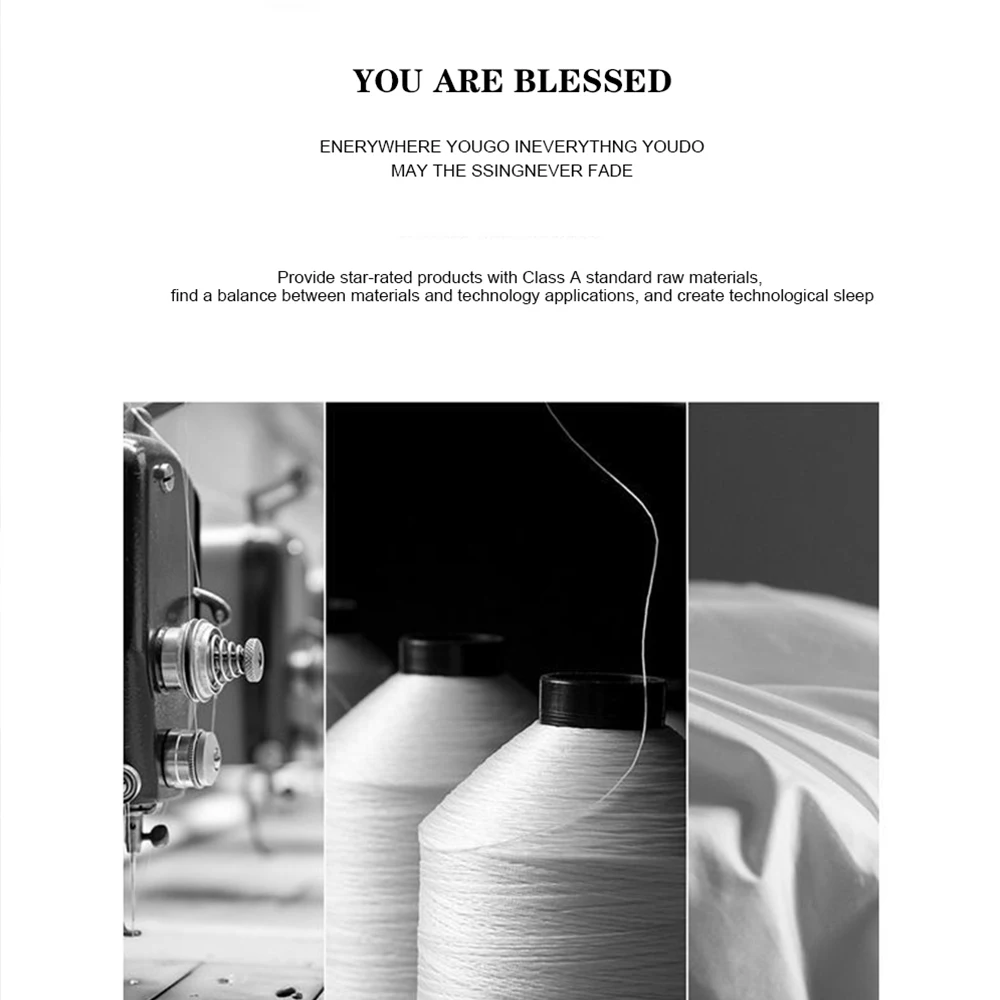
Cost Considerations: Price-to-Value Analysis
The price difference between traditional silk and vegan alternatives can be substantial, but understanding the value proposition of each requires looking beyond just the initial purchase price.
Price Range Comparison
Traditional silk typically commands premium prices due to its labor-intensive production and limited supply:
– High-quality silk sheets (19-25 momme): $300-1,000+ for queen sets
– Silk pillowcases: $50-150 each
– Silk clothing: Generally 30-100% more expensive than similar items in other fabrics
Vegan alternatives span a wide price range:
– Premium Tencel/Lyocell sheets: $150-400 for queen sets
– Bamboo sheet sets: $100-300 for queen sets
– Polyester satin: $30-100 for queen sets
Factors Affecting Price
Several factors influence the pricing of both traditional silk and vegan alternatives:
For traditional silk:
– Momme weight (higher = more expensive)
– Type of silk (mulberry commands premium prices)
– Production methods and certification
– Brand positioning
For vegan alternatives:
– Production technology (closed-loop systems cost more)
– Material quality and processing
– Certifications and sustainability practices
– Brand positioning
Long-Term Value Considerations
When evaluating the pros and cons of silk versus vegan silk, long-term value becomes an important consideration:
- High-quality silk can last many years with proper care, potentially offering better value despite higher initial cost
- Tencel and Modal typically offer good longevity, making them potentially good long-term values
- Lower-priced alternatives may require more frequent replacement, increasing total cost over time
- Care requirements affect total cost (dry cleaning or specialized detergents add to silk’s lifetime cost)
Some premium vegan alternatives now approach silk in price, particularly those using advanced sustainable production methods or featuring exceptional quality. This price convergence reflects both improved quality of alternatives and increasing consumer willingness to pay for sustainable options.
Practical Applications: Best Uses for Each Material
Different materials excel in different applications, making it important to match the material to its intended use. Both traditional silk and various vegan alternatives have specific strengths that make them ideal for certain purposes.
Bedding Applications
Traditional Silk:
– Ideal for pillowcases to reduce facial creasing and hair breakage
– Excellent for hot sleepers due to temperature regulation
– Superior for those with sensitive skin or allergies
– Premium choice for luxury bedding experiences
Sanctuary Soft offers a range of silk sheets that capitalize on these benefits, particularly for those seeking temperature regulation and skin benefits.
Tencel/Lyocell:
– Excellent for hot, humid climates due to superior moisture management
– Great for those with night sweats
– Good hypoallergenic option for sensitive skin
– Modern, slightly cooler feel than traditional silk
Bamboo:
– Good for those seeking antibacterial properties
– Excellent for value-conscious consumers wanting softness
– Suitable for those preferring a slightly more substantial feel than silk
Clothing Applications
Traditional Silk:
– Unmatched for formal wear with its distinctive drape and sheen
– Excellent for lightweight summer garments that breathe
– Superior for items where natural elasticity is valuable
– Ideal for special occasion garments with emotional significance
Cupro:
– Excellent alternative for flowy garments requiring exceptional drape
– Good for items requiring a subtle, sophisticated sheen
– Suitable for lightweight summer clothing
Modal:
– Ideal for casual wear requiring softness and comfort
– Excellent for items that require stretch and recovery
– Good for everyday items requiring easy care
Special Needs Applications
For Sensitive Skin:
– Both high-quality silk and Tencel excel
– Avoid polyester satin which may cause irritation
For Hair Care:
– Traditional silk pillowcases offer best friction reduction
– Smooth satin weave alternatives (regardless of fiber) better than cotton
– Bamboo silk sheets provide a good balance of benefits and value
For Travel:
– Silk travel items offer lightweight luxury
– Tencel blends offer durability with similar benefits
– Polyester satin provides easiest care for travel items
Full-size Silk Sheets, King Size Silk Sheets, Queen Size Silk Sheets, Twin Size Silk Sheets, Washable Silk Sheets
Price range: $95.95 through $178.37 Select options This product has multiple variants. The options may be chosen on the product page100% Silk Sheets, Green Silk Sheets, King Size Silk Bedding Set, Mulberry Silk Bedding Sets, Queen Size Silk Bedding Set
Price range: $1,246.21 through $1,615.22 Select options This product has multiple variants. The options may be chosen on the product pageEucalyptus Silk Bedding Sets, Eucalyptus Silk Sheets
Price range: $360.24 through $393.60 Select options This product has multiple variants. The options may be chosen on the product pagePink Silk Sheets, Twin Size Silk Sheets
$171.80 Select options This product has multiple variants. The options may be chosen on the product pageFull-size Silk Sheets, Pink Silk Sheets
$136.31 Select options This product has multiple variants. The options may be chosen on the product pageGrey Silk Sheets, Silk Sheet and Pillowcase Set
Price range: $88.20 through $146.64 Select options This product has multiple variants. The options may be chosen on the product page
Addressing Common Misconceptions
The world of silk and its alternatives is rife with misconceptions that can confuse consumers and lead to disappointing purchases. Clearing up these common points of confusion helps make better-informed choices.
“Silk” vs. “Satin” Confusion
One of the most prevalent misconceptions involves confusing fiber content (what the fabric is made from) with weave pattern (how the threads are interlaced):
- Silk is a specific fiber produced by silkworms
- Satin is a weave pattern characterized by floating yarns creating a smooth surface
- Satin weaves can be created using silk, polyester, nylon, rayon, or other fibers
- A “silk satin” is made from silk fibers in a satin weave
- A “polyester satin” uses polyester fibers in a satin weave
This distinction explains why not all shiny, smooth fabrics are silk, and not all silk fabrics have a satin finish.
Peace Silk Clarification
Another common misconception surrounds “peace silk” or “ahimsa silk”:
- Peace silk still comes from silkworms and is not vegan
- The process allows moths to emerge before harvesting broken cocoons
- The resulting fabric is still animal-derived silk protein
- The process yields less perfect, more textured silk than conventional methods
- It represents a more humane but not animal-free alternative
“Vegan Silk” Terminology
The term “vegan silk” itself can create confusion:
- No “vegan silk” contains any actual silk proteins
- These are alternatives that mimic silk’s properties
- The specific material (Tencel, bamboo, etc.) determines the exact properties
- Different alternatives excel at mimicking different aspects of silk
- Some alternatives are marketed with specific names like “Bamboo Silk” which is actually bamboo viscose or lyocell
Care Misconceptions
Many people have misconceptions about caring for these fabrics:
- Silk isn’t as delicate as many believe—it’s naturally quite strong
- Most vegan alternatives are actually easier to care for than assumed
- Not all silk requires dry cleaning; most can be hand washed
- Polyester satin is easy-care but may build static electricity
- All these fabrics last longer with proper care
Clearing up these misconceptions helps consumers make better choices and properly care for their purchases, regardless of which material they select.
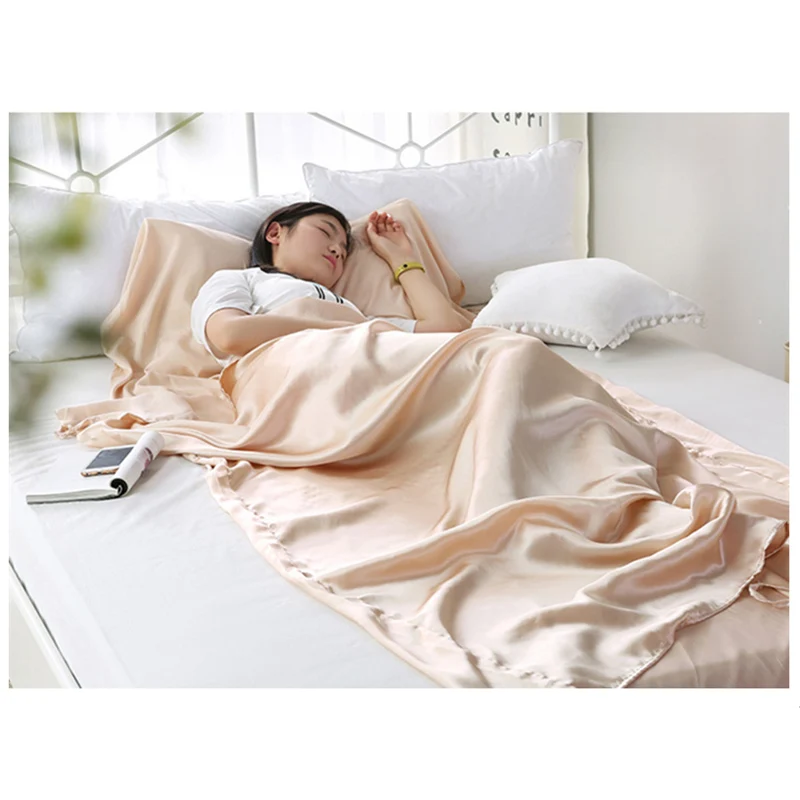
Making Your Choice: Values-Based Decision Framework
Choosing between traditional silk and vegan alternatives ultimately comes down to how you prioritize different values and needs. Here’s a framework to help guide your decision based on your primary concerns:
If Ethics Is Your Top Priority
If animal welfare is your foremost concern:
– Choose plant-based alternatives like Tencel/Lyocell or bamboo
– Verify production methods match your ethical standards
– Consider human labor and environmental factors as well
– Avoid both conventional and peace silk if strictly adhering to vegan principles
If Luxury Feel Is Your Top Priority
If the sensory experience matters most:
– Traditional silk offers the most authentic silk feel
– Cupro provides the closest alternative feel
– Premium Tencel/Lyocell offers excellent drape and smoothness
– Consider testing samples before making larger purchases
If Sustainability Is Your Top Priority
If environmental impact concerns you most:
– Tencel/Lyocell from closed-loop systems offers excellent sustainability
– Responsibly produced silk can be relatively sustainable
– Avoid petroleum-based synthetic alternatives
– Look for relevant certifications to verify claims
– Consider product longevity as part of sustainability equation
If Health Benefits Are Your Top Priority
If skin and hair benefits are your main concern:
– Both high-quality silk and Tencel excel for sensitive skin
– Traditional silk offers proven benefits for hair
– Bamboo provides natural antimicrobial properties
– Avoid synthetic options if you have sensitive skin
If Cost Is Your Top Priority
If budget is your primary constraint:
– High-quality bamboo offers good value
– Polyester satin provides the lowest initial cost
– Consider cost-per-use rather than just purchase price
– Mid-range Tencel offers good balance of quality and price
Balancing Multiple Priorities
Most decisions involve balancing several factors. Ask yourself:
– Which properties matter most for this specific item?
– How long do I expect this purchase to last?
– Which values am I unwilling to compromise?
– What’s my realistic budget for this item?
At Sanctuary Soft, we recognize that different customers prioritize different values, which is why we offer both premium traditional silk and high-quality vegan alternatives to meet various needs and preferences.
The Future of Ethical and Sustainable Textiles
The landscape of both traditional silk and vegan alternatives continues to evolve rapidly as innovation, consumer demands, and sustainability concerns reshape the textile industry. Understanding these emerging trends provides context for current choices and insight into what might be available in the future.
Innovation in Vegan Alternatives
Technological advancements are constantly improving vegan silk alternatives:
- New processing techniques are enhancing the silk-like qualities of plant-based fibers
- Biotechnology companies are developing lab-grown silk proteins without using silkworms
- Innovations in fiber blending are creating composites with hybrid properties
- Improved finishing techniques are enhancing drape and hand-feel of alternatives
- Agricultural waste streams are being transformed into new textile sources
These innovations are gradually narrowing the performance gap between traditional silk and its alternatives while improving sustainability profiles.
Sustainability Improvements in Traditional Silk
Traditional silk production is also evolving in response to sustainability concerns:
- More transparent supply chains allow better verification of production methods
- Improved efficiency in water and energy use during processing
- Growth in certified organic silk production
- Increased availability of peace silk and other more humane options
- Better dyes and finishing processes with reduced environmental impact
Consumer Influence on Industry Evolution
Consumer choices are driving significant industry changes:
- Demand for transparency is pushing brands to provide better information
- Preference for sustainable options is increasing investment in better alternatives
- Willingness to pay premiums for ethical production is changing business models
- Growing interest in product longevity is shifting focus from fast fashion
- Consumer education is creating more sophisticated demand
Every purchase decision contributes to these market signals, making consumer choices powerful drivers of industry evolution.
The Power of Informed Choice
As both traditional silk and vegan alternatives continue to improve, the most important development is perhaps the increasing availability of information that allows truly informed choices. Certifications, transparent supply chains, and better consumer education all contribute to a marketplace where values can align with purchases.
By understanding the trade-offs involved in different materials and making conscious choices, consumers help shape a future textile industry that better balances luxury, performance, ethics, and sustainability.
Is Vegan Silk Actually Better Than Traditional Silk?
The question of whether vegan silk is “better” than traditional silk defies a simple answer because “better” depends entirely on what values and properties matter most to the individual. A more useful approach is examining how these materials compare across multiple dimensions.
Ethical Considerations
If animal welfare is your primary concern, vegan alternatives are clearly preferable as they don’t involve silkworms. However, different vegan alternatives have varying impacts on other ethical dimensions like human labor conditions and environmental footprint.
Environmental Impact
From an environmental perspective, the comparison is nuanced:
– Closed-loop Tencel/Lyocell may have the best overall environmental profile
– Traditional silk uses less water than cotton but more than some alternatives
– Polyester satin has issues with microplastic pollution and non-biodegradability
– The longevity of materials significantly affects their lifetime environmental impact
Performance Properties
In terms of performance:
– Traditional silk offers the authentic silk feel that alternatives attempt to mimic
– Some vegan alternatives outperform silk in specific areas like moisture management
– Different alternatives excel at replicating different silk properties
– Personal preference plays a significant role in determining which performs “better”
Cost and Accessibility
From a practical standpoint:
– Vegan alternatives generally offer more accessible price points
– Traditional silk typically requires more careful maintenance
– High-quality versions of both options represent good long-term value
– The price-performance calculation varies widely based on intended use
A Balanced Perspective
Rather than declaring one option universally “better,” a more helpful approach is recognizing that both traditional silk and various vegan alternatives have legitimate places depending on individual priorities. High-quality examples exist in both categories, and making an informed choice involves aligning material selection with personal values and specific needs.
What makes Sanctuary Soft unique is our recognition that consumers have different priorities, which is why we offer premium options in both traditional silk and vegan alternatives—allowing you to choose what’s truly “better” for your specific situation and values.
How to Identify Quality in Both Silk and Vegan Alternatives
Whether choosing traditional silk or vegan alternatives, quality varies tremendously within each category. Understanding how to identify superior products ensures you get the best value regardless of which material you choose.
Quality Indicators for Traditional Silk
When evaluating silk products, look for:
Momme Weight:
– 19-25 momme represents premium quality for bedding
– Higher isn’t always better—extremely high momme can feel heavy
– Below 16 momme may lack durability for items with regular use
Silk Type:
– 100% Mulberry silk is the gold standard for luxury and durability
– Clear labeling of silk type (not just “100% silk”)
– Grade 6A represents the highest quality
Weave and Construction:
– Even, consistent weave without slubs (unless intentional)
– Finished edges with quality stitching
– Charmeuse weave for maximum smoothness and sheen
Certifications:
– OEKO-TEX certification ensures testing for harmful substances
– GOTS certification for organic options
– Clear country of origin information
Quality Indicators for Vegan Alternatives
For vegan silk alternatives, quality markers include:
Tencel/Lyocell:
– Look for branded TENCEL™ lyocell for verified sustainable production
– Closed-loop production certification
– Smooth, consistent finish without pilling
– Clear fiber content labeling
Bamboo:
– Specification of production method (lyocell process preferred)
– OEKO-TEX certification
– Consistent color and finish
– Tight, even weave for durability
Other Alternatives:
– Clear identification of actual fiber content
– Appropriate certifications for claimed benefits
– Quality construction with secure seams
– Brand reputation and transparency
Warning Signs of Poor Quality
Regardless of material, watch for these red flags:
- Vague or missing fiber content information
- Extremely low prices compared to market standards
- Poor finish quality, loose threads, or uneven dyeing
- Excessive sheen (often indicates cheap polyester)
- Strong chemical odors
- Excessive wrinkling or poor drape
- Missing care instructions
Testing Quality When Shopping Online
When purchasing online where you can’t touch the product:
- Look for detailed specifications (exact fiber content, weight, construction)
- Check for close-up images of the fabric texture
- Read reviews specifically mentioning quality and durability
- Verify return policies in case the quality doesn’t meet expectations
- Research the brand’s reputation for quality control
- Look for detailed descriptions of production methods
By paying attention to these quality indicators, you can ensure you’re getting the best possible product whether you choose traditional silk or one of its vegan alternatives.

